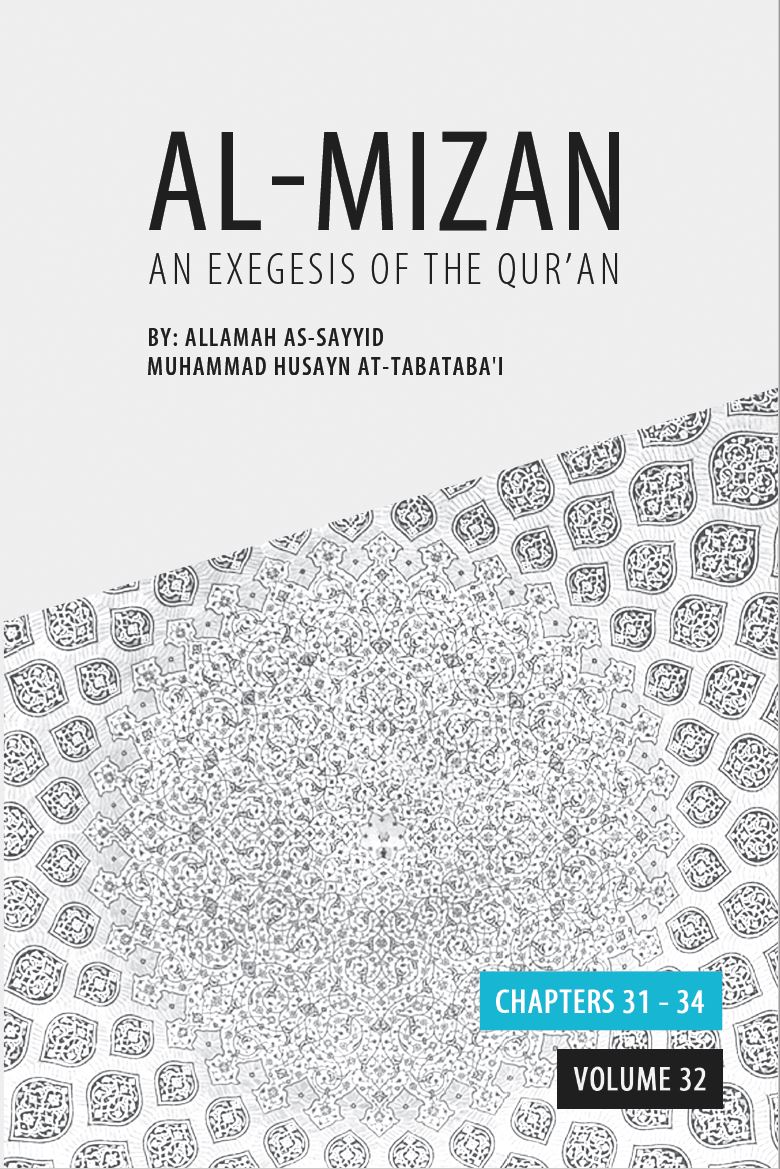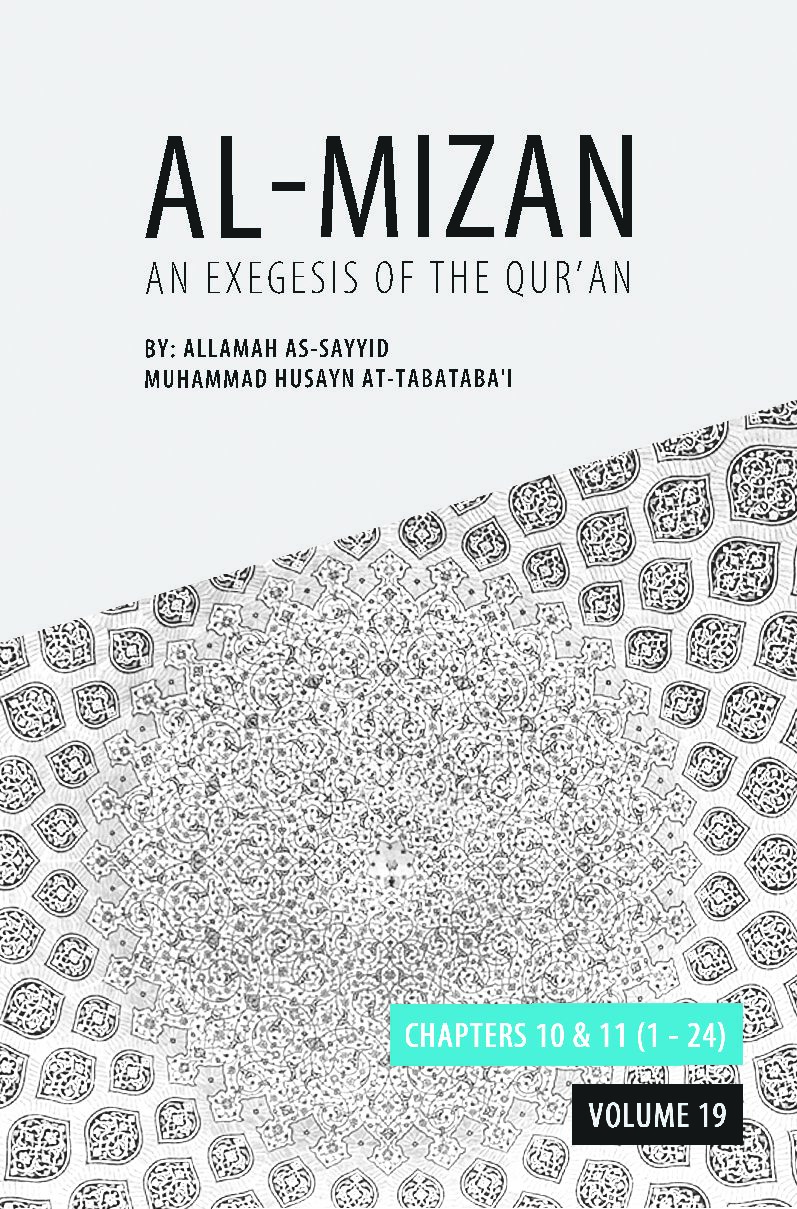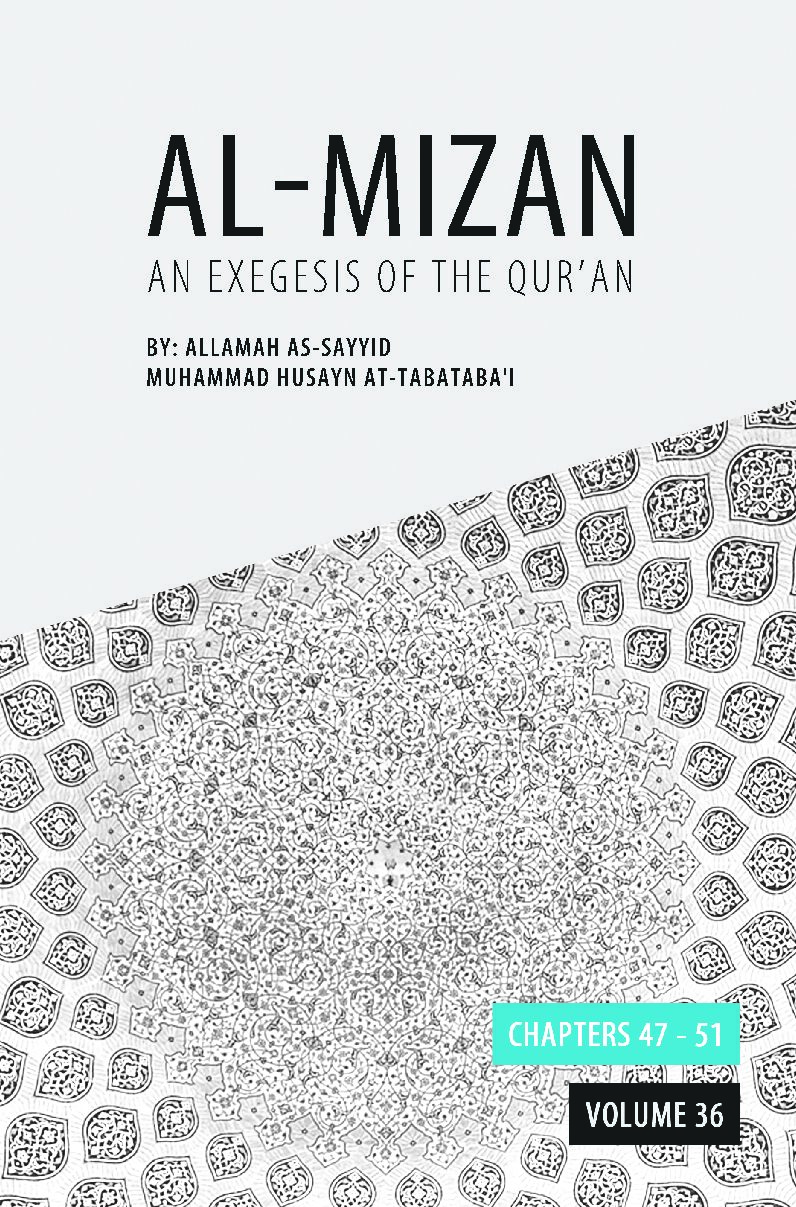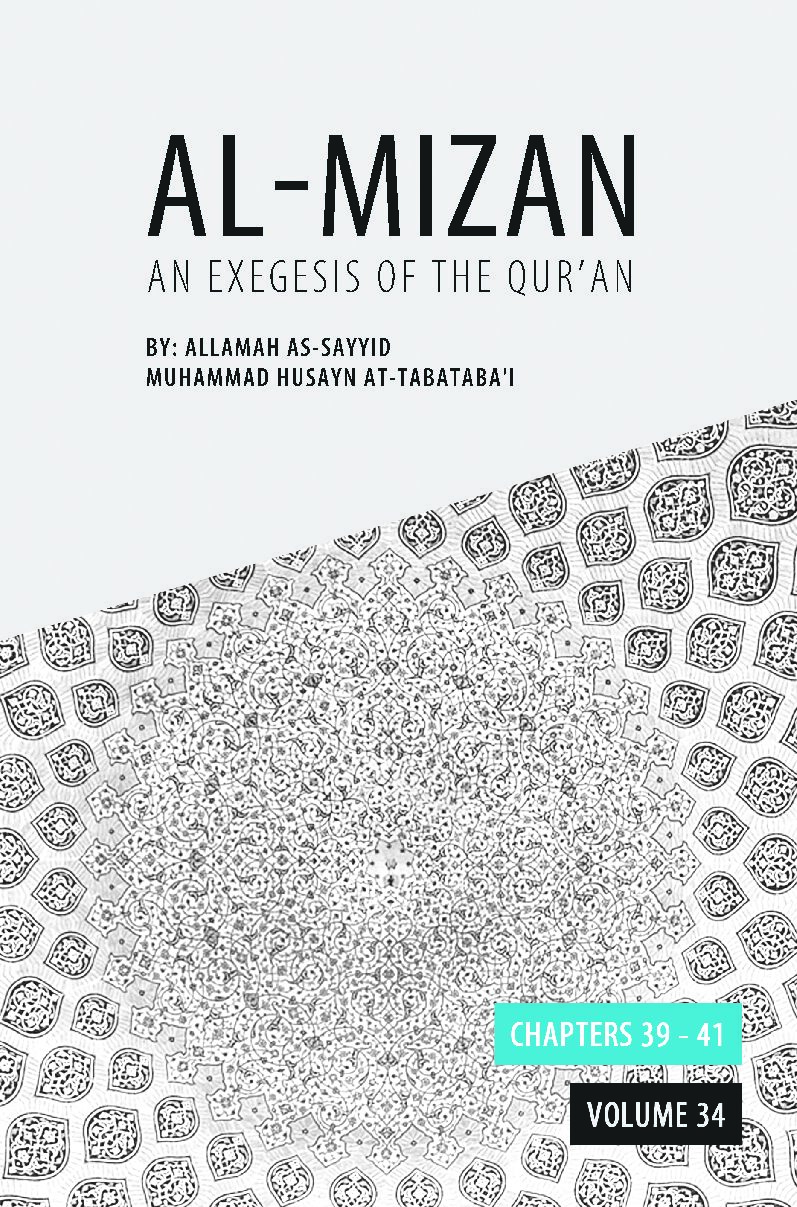This volume covers the exegesis of chapters 31, 32, 33 and 34.
Like most Meccan chapters, Sūrah Luqmān (31), Sūrah al-Sajdah (32), and Sūrah Sabaʾ (34) revolve around the central concepts of Islamic doctrine – monotheism, the afterlife, and prophethood – as well as ethical and moral exhortations. Sūrah Luqmān, however, is unique, in that it details the teachings of the sage Luqmān, thought to have lived in Ethiopia around 1100 BC. While accounts of Luqmān circulated in the Arabian Peninsula prior to Islam, he is one of the few Qur’anic sacred figures to lack a direct parallel in the Bible. Therefore, ʿAllāmah includes a special discussion on who he was, what narrations say about him, and whether he was a prophet.
Primarily, Sūrah Luqmān follows the frame story of Luqmān advising his son; for instance, exhorting him to lower his voice, since it is the donkey that brays the loudest, and to abstain from swaggering. Despite the 2000+ year gap between Luqmān and today, this advice is particularly suited to today’s political discourse and social media. The chapter concludes with thought-provoking verses such as:
- If the trees of the earth were pens, and the sea replenished with seven more seas, the words of God would not be spent (31:27).
- Your creation and your resurrection are not but as of a single soul (31:28).
Unlike Sūrah Luqmān, Sūrah al-Sajdah emphasizes the origin and fate of the human being. Born from base origins, the human being is enlivened by the divine breath, lives for a time, and then returns to God and finds a fate in the hereafter concordant with his or her deeds.
Sūrah al-Aḥzāb (33) differs from the other chapters analyzed in this volume, in that it discusses real-time concerns troubling the nascent Muslim polity in Medina, and the urgent need to set laws, establish social standards, and arrange for defence. Although an important event discussed in this chapter is the Battle of Khandaq (627 CE), which the exegesis includes lengthy historical narrations on, this chapter also shows that many challenges were internal. For instance, it condemns gossiping, hypocrisy, and sedition. It aims to correct harmful behavior and poor manners, such as eyeing the Prophet’s wives. It urges the believing women to don outer garments discourage catcalling or abuse. From this chapter, one gets a sense of the uphill battle the Prophet sometimes faced in building his community, and his patience.
This chapter is also unique in its focus on the private life of the Prophet. Special rules and expectations are outlined for his wives, who are given the option to leave him in pursuit of material wealth. It speaks of the Prophet’s marriage to Zaynab, the former wife of his adopted son Zayd, and chides the Muslims for loitering at the Prophet’s house: while the Prophet is too polite to say anything about it, God is not. This chapter is known for the verses declaring the purification of and blessings upon the Household of the Prophet (33:33, 33:56), which are a special focus of ʿAllāmah’s analysis.
Returning to the discussion of theological matters, Sūrah Sabaʾ models dialectical arguments on the topics of monotheism, prophethood, and resurrection. It takes its name from the people of Sabaʾ (not the Queen of Sheba, who is discussed in Sūrah al-Naml). Enjoying God’s favour, the people of Sabaʾ fell into complacency and arrogance; therefore, their luxurious abodes were ruined, and they were scattered. Again, a valuable lesson for modern times.
This sūrah also speaks of David and Solomon, both of whom enjoyed command over creation; for instance, the mountains and birds praised God with David, and Solomon was gifted control over the wind and the jinn. These accounts echo the beliefs that a high level of piety and nearness to God enables an intimate link between the perfected human being and the creation; and that, far from being lifeless and inanimate, creation itself is alive and aware, in constant worship of God.
As with the previous volumes published by the Tawheed Institute (Australia), this translation is meticulous (if I may say so myself), with careful attention to detail and annotations by the translators. Despite the inherent complexity of Tafsīr al-Mīzān, efforts were made to make it as clear and fluid as possible. The tireless efforts, patience, and commitment of Ali Khalfan, the spearhead of this project, must be acknowledged in bringing yet another volume to fruition. It is the hope of all involved in this project that it is inspiring and educational to the reader.
Foreword by Dr. Amina Inloes (Editor)
Translators: Alexander Khalili & Dr. Amina Inloes





